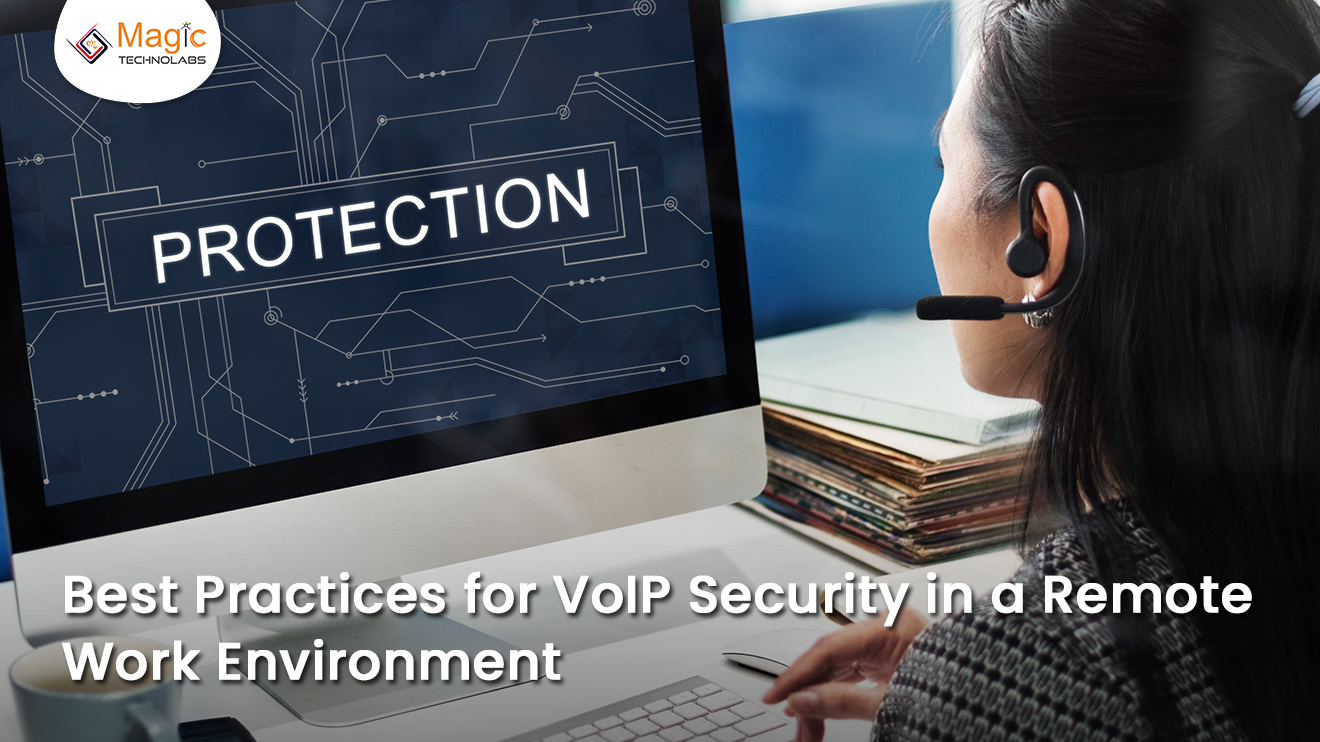As the world continues to navigate the ongoing COVID-19 pandemic, remote work has become increasingly common, and with it comes the need for strong VoIP security practices. Voice over Internet Protocol (VoIP) technology enables individuals to communicate over the internet using voice and video, making it a popular choice for remote work environments.
One of the most important steps in maintaining VoIP security in a remote work environment is to ensure that all software and hardware are up to date. This includes firewalls, routers, and any other devices or programs that are used to connect to the internet. Regular updates and patches help to prevent cyber attacks by fixing known vulnerabilities and addressing potential security issues.
It is also important to limit access to VoIP systems and networks to authorized personnel only. This can be achieved by using multi-factor authentication, which requires a password and another form of identification, such as a fingerprint or security token, to access the network. Access should also be restricted based on job roles and responsibilities, with only those who require access given permission to use the system.
Encryption and Authentication Protocols for Secure VoIP Communications
VoIP (Voice over Internet Protocol) is a widely used communication technology that allows voice and video calls to be transmitted over the internet. However, VoIP communications can be vulnerable to various security threats, including eavesdropping, identity theft, and unauthorized access. To address these threats, encryption and authentication protocols can be used to secure VoIP communications. Here are some commonly used protocols:
Secure Real-time Transport Protocol (SRTP): SRTP is an extension of the Real-time Transport Protocol (RTP) that provides encryption and authentication for VoIP communications. SRTP uses advanced encryption standard (AES) to encrypt the voice and video data and the message authentication code (MAC) to ensure the integrity of the data.
Transport Layer Security (TLS): TLS is a widely used encryption protocol that provides end-to-end security for VoIP communications. TLS is used to encrypt the signaling messages and to authenticate the identity of the communicating parties. TLS is commonly used in combination with SRTP to provide both encryption and authentication.
ZRTP: ZRTP is an encryption protocol that provides secure key exchange for VoIP communications. ZRTP uses Diffie-Hellman key exchange to generate session keys for encryption and authentication. ZRTP can be used with any VoIP application that supports the Real-time Transport Control Protocol (RTCP).
Session Initiation Protocol (SIP) Authentication: SIP is a signaling protocol used for initiating, maintaining, and terminating VoIP calls. SIP authentication is used to authenticate the identity of the communicating parties and to prevent unauthorized access. SIP authentication can be implemented using various methods, including digest authentication, mutual authentication, and certificate-based authentication.
Media Gateway Control Protocol (MGCP) Authentication: MGCP is a protocol used to control media gateways in VoIP networks. MGCP authentication is used to authenticate the identity of the media gateway and to prevent unauthorized access. MGCP authentication can be implemented using various methods, including password authentication and certificate-based authentication.
Regular Security Audits and Vulnerability Scanning for VoIP Infrastructure
Regular security audits and vulnerability scanning are critical components of a comprehensive approach to securing a VoIP infrastructure. VoIP (Voice over Internet Protocol) refers to the technology used to transmit voice and multimedia content over the internet. VoIP infrastructure typically consists of hardware and software components, including VoIP servers, gateways, IP phones, and routers.
Security audits are typically conducted by a team of security professionals who evaluate the security posture of an organization's VoIP infrastructure. The audit may involve a review of policies, procedures, and configurations, as well as physical security controls such as access controls and monitoring systems.
Vulnerability scanning involves the use of automated tools to identify potential vulnerabilities in an organization's VoIP infrastructure. These tools scan the network for known vulnerabilities and can help identify areas of the infrastructure that may be susceptible to attack.
Both security audits and vulnerability scanning should be conducted regularly to ensure that an organization's VoIP infrastructure remains secure. This is especially important given the constantly evolving threat landscape and the emergence of new vulnerabilities and attack vectors.
Effective Measures for Firewall and Network Security in Remote Work Environments
With the rise of remote work, the need for effective firewall and network security measures has become more important than ever. Here are some effective measures for firewall and network security in remote work environments:
Use a Virtual Private Network (VPN): A VPN is a secure and encrypted connection between your remote device and your company's network. This ensures that your internet traffic is protected from prying eyes and that your data is kept safe and secure.
Use two-factor authentication: Two-factor authentication is an extra layer of security that requires you to provide a second form of identification, such as a code sent to your phone, in addition to your password.
Update software and operating systems: Ensure that your operating system and software are always up-to-date, as these updates often include security patches and fixes.
Use strong passwords: Use unique and strong passwords for all your accounts, and avoid using the same password across multiple accounts. Consider
Use firewalls: A firewall is a security system that monitors and controls incoming and outgoing network traffic. Ensure that you have a firewall set up on your remote device, as well as on your company's network.
Use anti-virus software: Anti-virus software helps protect your remote device from viruses and malware. Ensure that you have anti-virus software installed and that it is kept up-to-date.
Conclusion
In conclusion, VoIP security is critical for remote work environments. By ensuring that all software and hardware are up to date, using strong passwords, limiting access to authorized personnel, encrypting all data transmissions, and providing regular training and education to employees, organizations can help to protect their VoIP systems and networks from cyber threats.
Read More: VoIP Callers Demystified: How They Differ From Traditional Phone Calls
















